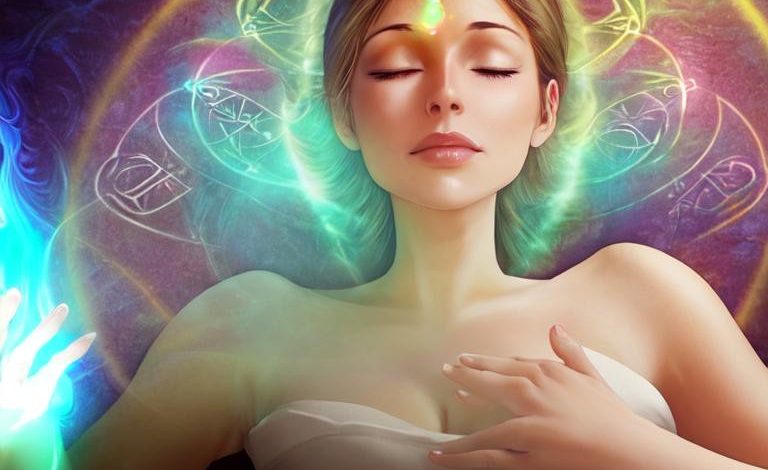
Welcome to the mystical world of Reiki Healing, a centuries-old practice that is gaining increasing popularity across the globe. Reiki is a form of alternative healing that originated in Japan in the early 20th century, and its name comes from the Japanese words “rei,” meaning universal, and “ki,” meaning life energy. This healing technique is based on the idea that everything in the universe is made up of energy, and that this energy can be channeled to promote healing and balance in the body, mind, and spirit.
Reiki is a spiritual practice that involves the transfer of healing energy from the hands of a practitioner to a recipient. It is a non-invasive, gentle, and safe form of healing that aims to promote relaxation, reduce stress and anxiety, and restore balance to the body’s energy systems. Reiki is often used as a complementary therapy to other medical treatments and can be used to help manage a variety of conditions, including chronic pain, anxiety, depression, and insomnia.
The practice of Reiki is centered on the concept of the chakras, which are believed to be seven energy centers located throughout the body. Each chakra is associated with a specific color and corresponds to a particular aspect of our physical, emotional, and spiritual well-being. The Reiki practitioner channels energy through their hands to the recipient, focusing on the chakras that need balancing or healing. The energy that flows through the practitioner’s hands is believed to be intelligent and intuitive, finding its way to where it is needed most.
Reiki is not just a physical practice but also a spiritual one. Practitioners often begin by meditating to clear their minds and prepare themselves to receive and channel energy. During a Reiki session, the practitioner may also use crystals, aromatherapy, and other healing tools to enhance the healing energy being channeled. The recipient lies or sits comfortably while the practitioner places their hands in various positions around the body. Some people report feeling a warm or tingling sensation during the session, while others simply feel relaxed and peaceful.
One of the most fascinating things about Reiki is that it can be practiced by anyone. You do not need any special abilities or training to practice Reiki, although many practitioners choose to undergo formal training to deepen their understanding and hone their skills. Reiki can also be practiced on oneself, making it a powerful self-care tool. By channeling healing energy to ourselves, we can promote physical and emotional healing, reduce stress and anxiety, and improve our overall sense of well-being.
Reiki has a long and rich history, and there are many different styles and lineages of Reiki practice. While the fundamental principles remain the same across all styles, each lineage has its unique approach and techniques. Some styles focus on traditional Japanese practices, while others incorporate elements of Western spirituality and new age beliefs. Regardless of the lineage, the core of Reiki remains the same – the channeling of healing energy to promote balance and harmony in the body, mind, and spirit.
Reiki Healing is a fascinating and magical practice that offers a holistic approach to healing and well-being. It is a powerful tool that can be used to promote relaxation, reduce stress and anxiety, and restore balance to our energy systems. Whether you are seeking relief from physical or emotional pain, or simply looking to deepen your spiritual practice, Reiki has something to offer. So, take a deep breath, relax, and open yourself up to the healing power of Reiki.
The history and origins of Reiki
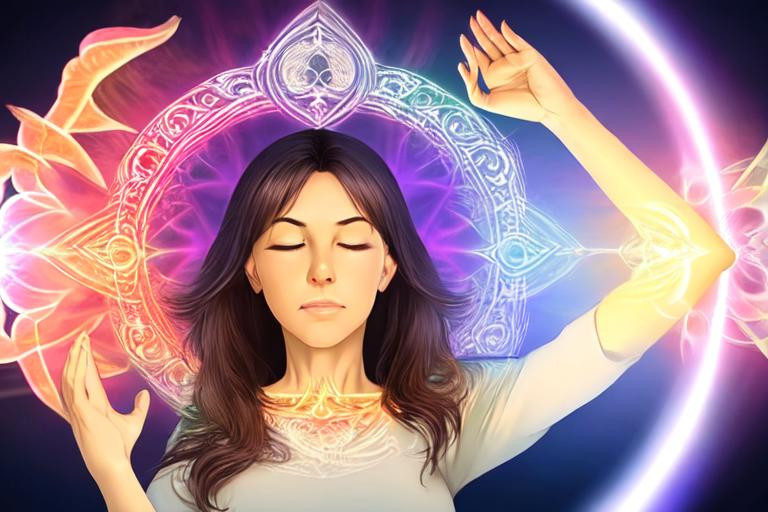
The history and origins of Reiki are shrouded in mystery and intrigue, but one thing is for certain – it is a powerful and transformative practice that has captivated the hearts and minds of millions around the world. The word “Reiki” itself is made up of two Japanese words – “Rei” meaning “spirit” or “soul” and “Ki” meaning “energy” or “life force”. Together, they form a powerful symbol of healing and harmony that has been passed down through generations of practitioners.
The origins of Reiki can be traced back to Japan in the early 1900s, where a man named Mikao Usui discovered the power of energy healing after a period of intense spiritual seeking. According to legend, Usui climbed Mount Kurama and meditated for 21 days, during which time he experienced a profound spiritual awakening and was given the gift of Reiki. He then went on to share this gift with others, and thus began the spread of Reiki around the world.
Over the years, Reiki has evolved and taken on many different forms, each with its own unique perspective and approach. Some practitioners focus on the spiritual aspects of Reiki, while others emphasize the physical benefits of the practice. Some use traditional hand positions, while others incorporate different techniques and symbols. Despite these variations, however, the underlying principles of Reiki remain the same – to channel healing energy and restore balance to the body, mind, and spirit.
One of the key tenets of Reiki is that we all have the ability to tap into our own inner healing power, and that by doing so, we can bring about profound transformation in our lives. This is why Reiki is often referred to as a “self-healing” practice – by connecting with the universal life force energy, we can activate our own innate healing abilities and promote healing on all levels.
Another important aspect of Reiki is the concept of energy centers or “chakras” in the body. According to Reiki philosophy, there are seven main chakras that correspond to different aspects of our physical, emotional, and spiritual well-being. By working with these chakras and clearing any blockages or imbalances, we can create a more harmonious and balanced energy system, leading to greater health and vitality.
Today, Reiki has become a widely recognized and respected form of alternative healing, with many hospitals and healthcare facilities incorporating it into their treatment programs. It is also a popular tool for stress reduction, relaxation, and personal growth, and is practiced by millions of people around the world. Whether you are a beginner or a seasoned practitioner, the magic of Reiki is sure to leave you feeling renewed, refreshed, and inspired.
Different levels of Reiki attunements
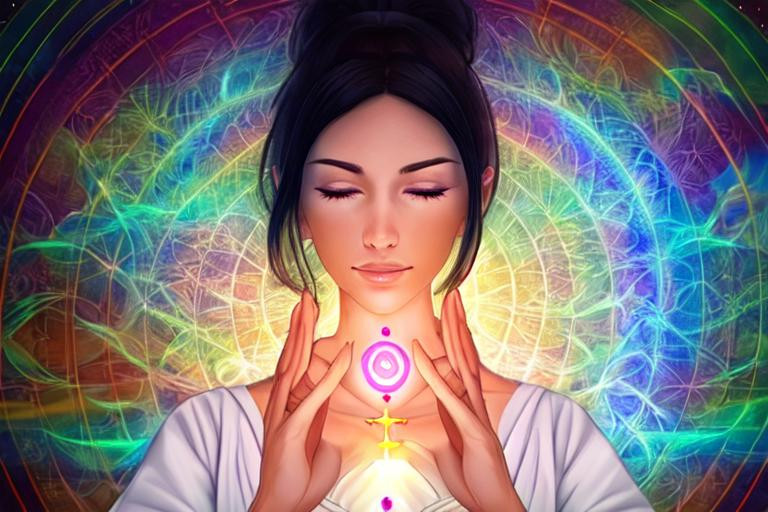
Reiki is an ancient practice that has been passed down through generations of practitioners. One of the key aspects of Reiki is the concept of attunements – a process in which a practitioner is “tuned in” to the universal life force energy and becomes a conduit for healing. Attunements are typically conducted by a Reiki master, and involve a series of rituals and initiations that help to open the practitioner’s energy channels and increase their sensitivity to the healing energy.
There are three main levels of Reiki attunements – Level I, Level II, and Level III (also known as the Master level). Each level builds upon the previous one, and involves a deeper understanding of the principles and practices of Reiki. Here’s a closer look at what each level entails:
Level I: The first level of Reiki attunements is all about self-healing and personal growth. This level typically involves learning the basics of Reiki, including the history and principles of the practice, as well as the hand positions and symbols used in healing. At this level, practitioners focus primarily on healing themselves, and may also work with family and friends.
Level II: The second level of Reiki attunements involves a deeper exploration of the symbols and techniques used in healing. Practitioners at this level learn how to use these symbols to send healing energy to others, and may also incorporate distance healing techniques. Level II also includes an emphasis on emotional and mental healing, and practitioners may work with specific emotions or issues.
Level III: The third and final level of Reiki attunements is the Master level. At this level, practitioners become teachers and guides for others, and may also have the ability to attune others to Reiki. Master-level practitioners have a deep understanding of the spiritual aspects of Reiki, and may incorporate meditation, visualization, and other techniques into their practice.
In addition to these main levels, there are also many different schools of Reiki that offer additional levels or variations on the standard levels. Some schools, for example, offer a Level IV or Grand Master level, while others focus on specific aspects of Reiki such as animal healing or crystal healing.
Regardless of the level or school, however, the attunement process is a deeply transformative and magical experience. During the attunement, practitioners may experience a range of sensations, from warmth and tingling to profound states of relaxation and inner peace. Many practitioners report feeling a renewed sense of energy and vitality, as well as a deeper connection to their own inner wisdom and intuition.
Overall, the different levels of Reiki attunements offer a rich and diverse range of experiences for practitioners. Whether you are just beginning your Reiki journey or have been practicing for years, there is always something new to discover and explore. So why not take the plunge and see where the magic of Reiki can take you?
Step-by-step guide to self-Reiki and treating others
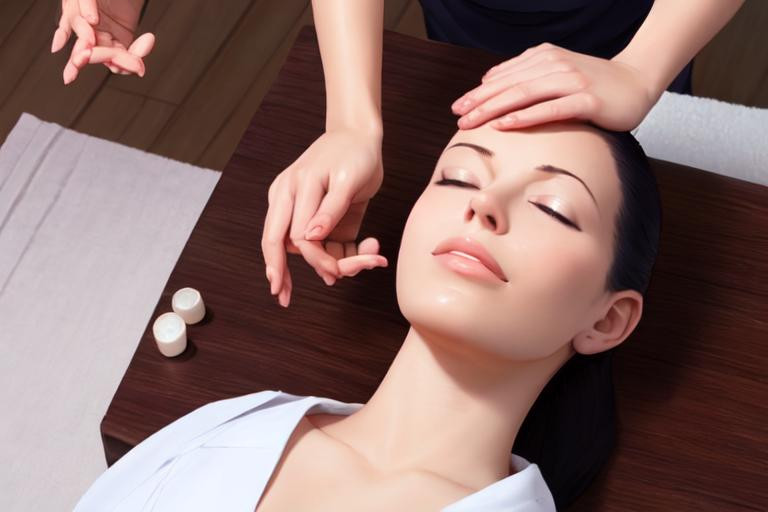
Reiki is a wonderful practice that can bring healing, balance, and peace to your life. One of the great things about Reiki is that it can be easily learned and practiced by anyone, regardless of experience or skill level. In this step-by-step guide, we’ll walk you through the basics of how to perform self-Reiki and treat others.
Step 1: Preparation
Before you begin practicing Reiki, it’s important to set the stage for a relaxing and peaceful experience. Find a quiet and comfortable place where you won’t be disturbed, and make sure you have everything you need – including a comfortable chair or mat, soothing music or sounds, and any other props or accessories that will help you feel relaxed and centered.
Step 2: Grounding
The first step in any Reiki practice is to ground yourself and connect with the energy of the earth. This can be done through a simple visualization exercise – close your eyes and imagine yourself standing barefoot on the earth, with roots extending down from the soles of your feet and deep into the earth. Take a few deep breaths, and allow yourself to feel the support and stability of the earth beneath you.
Step 3: Self-Reiki
To begin a self-Reiki practice, start by placing your hands on your body in a series of hand positions. These positions typically cover the major energy centers of the body, including the crown of the head, the heart, the stomach, and the feet. As you move your hands from one position to the next, focus on channeling healing energy into your body, and allow yourself to relax and let go of any tension or stress.
Step 4: Treating Others
Once you have mastered the basics of self-Reiki, you can begin treating others. To do this, start by asking the person to lie down or sit comfortably, and explain what you will be doing. Then, place your hands on their body in a series of hand positions, following the same sequence as in your self-Reiki practice. As you move your hands from one position to the next, focus on channeling healing energy into the person’s body, and allow yourself to be guided by your intuition and inner wisdom.
Step 5: Distance Healing
In addition to in-person Reiki treatments, you can also perform distance healing. To do this, simply visualize the person you wish to heal, and focus on sending healing energy to them. You can use symbols or other visualization techniques to enhance the effectiveness of your distance healing.
Step 6: Closing
At the end of your Reiki practice, take a few deep breaths and thank the universe for the healing energy that you have channeled. Ground yourself once again by imagining roots extending deep into the earth, and allow yourself to feel grounded and centered.
Reiki is a beautiful and powerful practice that can bring healing and balance to your life. Whether you are practicing self-Reiki or treating others, always remember to approach the practice with an open heart and a sense of curiosity and wonder. With practice and patience, you can develop your skills and abilities as a Reiki practitioner, and help to bring healing and light to the world around you.
Tips for maintaining a healthy and balanced energy system

Maintaining a healthy and balanced energy system is an important part of overall health and wellness. When our energy is balanced, we feel more centered, grounded, and connected to the world around us. Here are some tips for maintaining a healthy and balanced energy system:
- Practice self-care: Self-care is essential for maintaining a healthy and balanced energy system. This includes getting enough sleep, eating a healthy diet, staying hydrated, and engaging in regular exercise or physical activity.
- Practice mindfulness: Mindfulness practices, such as meditation and yoga, can help to calm the mind and promote a sense of inner peace and well-being. These practices can also help to balance and harmonize your energy system.
- Spend time in nature: Spending time in nature is a great way to connect with the earth’s natural energy and restore balance to your own energy system. Whether it’s a walk in the woods or a day at the beach, spending time in nature can be a powerful way to boost your energy and promote overall wellness.
- Use crystals and gemstones: Crystals and gemstones are believed to have powerful healing properties and can be used to balance and harmonize the body’s energy system. Some popular crystals for energy balance include amethyst, clear quartz, and rose quartz.
- Practice Reiki: Reiki is a powerful healing practice that can help to balance and harmonize the body’s energy system. Whether you are practicing self-Reiki or receiving treatment from a practitioner, Reiki can be a great way to restore balance and promote overall well-being.
- Set healthy boundaries: Setting healthy boundaries is important for maintaining a healthy and balanced energy system. This means learning to say no to things that drain your energy and creating space for the things that bring you joy and fulfillment.
- Engage in creative activities: Engaging in creative activities, such as painting, writing, or playing music, can help to balance and harmonize your energy system by promoting a sense of joy and creative expression.
- Practice gratitude: Practicing gratitude is a powerful way to boost your energy and promote overall well-being. Take time each day to reflect on the things that you are grateful for, and cultivate an attitude of gratitude and positivity.
- Surround yourself with positive energy: Surrounding yourself with positive energy, whether it’s through spending time with supportive friends and family or engaging in activities that bring you joy, can help to boost your energy and promote overall well-being.
- Listen to your body: Finally, it’s important to listen to your body and pay attention to the signals it is sending you. If you feel tired, rest. If you feel hungry, eat. By tuning into your body’s needs and honoring them, you can help to promote a healthy and balanced energy system.
Maintaining a healthy and balanced energy system takes time and effort, but the rewards are well worth it. By incorporating these tips into your daily routine, you can help to promote overall wellness and feel more centered, grounded, and connected to the world around you.
The Magic of Reiki: Your Questions Answered
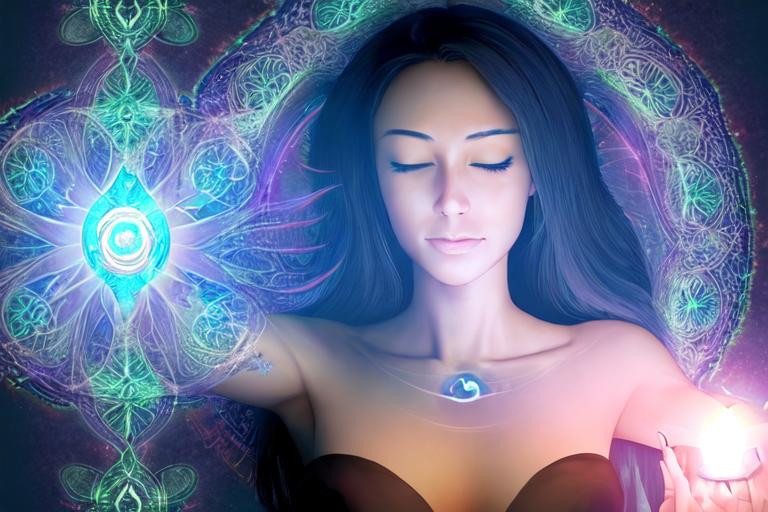
Have questions about Reiki healing? We’ve got you covered! In this Q&A section, we address some common questions and misconceptions about Reiki, as well as provide insights into how Reiki can be incorporated into daily life. Whether you’re a beginner or a seasoned practitioner, you’re sure to find valuable information and guidance here. So read on and discover the magic of Reiki!
What is Reiki?
Reiki is a Japanese word that means “universal life energy.” It is a healing practice that was developed in the early 20th century by a Japanese Buddhist monk named Mikao Usui. According to legend, Usui received the knowledge of Reiki during a 21-day meditation on a mountain in Japan.
How does Reiki work?
Reiki is based on the idea that everything is energy, and that by channeling and manipulating that energy, one can heal physical, emotional, and spiritual imbalances. Reiki practitioners use their hands to transfer energy to the recipient, either by laying them on or hovering them over the body.
What does a Reiki session involve?
During a Reiki session, the recipient lies down fully clothed on a massage table or sits in a chair. The practitioner begins by placing their hands on or above the recipient’s body, starting at the head and moving down to the feet. The recipient may feel a warm or tingling sensation, or they may simply feel relaxed.
What are the benefits of Reiki?
Reiki is believed to promote relaxation, reduce stress and anxiety, and relieve pain and other physical symptoms. It is also said to help with emotional issues such as depression, grief, and anger, and to promote spiritual growth and connection.
Is Reiki a religion?
No, Reiki is not a religion. While it does have some spiritual aspects, such as the belief in universal energy, it is not tied to any specific religious doctrine.
Can anyone learn Reiki?
Yes, anyone can learn Reiki. It is a simple and non-invasive practice that can be learned in just a few hours. There are three levels of Reiki training, each one building on the previous one.
What happens during Reiki training?
During Reiki training, the student learns how to channel and manipulate energy, as well as how to give a full Reiki session. They also receive a series of attunements, which are said to open up their energy channels and enhance their ability to channel energy.
What are the different levels of Reiki?
There are three levels of Reiki training: Level 1, Level 2, and Master Level. Level 1 is focused on self-healing and learning the basics of Reiki. Level 2 is focused on distant healing and learning how to use symbols to enhance the power of Reiki. Master Level is focused on teaching and passing on the knowledge of Reiki to others.
Can Reiki be done remotely?
Yes, Reiki can be done remotely. This is called distant healing, and it involves the practitioner sending energy to the recipient from a distance. Distant healing can be just as effective as in-person Reiki.
What are Reiki symbols?
Reiki symbols are sacred symbols that are used to enhance the power of Reiki. They are usually taught in Level 2 Reiki training and are used during Reiki sessions to help focus and direct the energy.
What is a Reiki attunement?
A Reiki attunement is a process in which the Reiki Master opens up the student’s energy channels and enhances their ability to channel and manipulate energy. Attunements are given at each level of Reiki training.
What are the chakras?
The chakras are energy centers in the body that are associated with different physical, emotional, and spiritual functions. There are seven main chakras, each corresponding to a different area of the body. Reiki practitioners often focus on the chakras during a session to balance and harmonize the energy in the body.
What are some common experiences during a Reiki session?
During a Reiki session, the recipient may experience a variety of sensations, including warmth, tingling, or a sense of relaxation. Some people may also experience emotional releases or insights during a session.
Are there any side effects of Reiki?
Reiki is a safe and non-invasive practice, and there are no known negative side effects. However, some people may experience a temporary increase in symptoms after a session as the body adjusts to the energy shifts.
What are some common misconceptions about Reiki?
One common misconception about Reiki is that it is a form of massage or physical manipulation. In reality, Reiki involves only the transfer of energy, and the practitioner does not manipulate the body in any way.
Another misconception is that Reiki can cure all ailments or replace traditional medical treatment. While Reiki can be a powerful complement to traditional medical care, it is not a substitute for professional medical treatment.
How can Reiki be incorporated into daily life?
Reiki can be incorporated into daily life in a variety of ways. Some people use it as a daily practice for self-healing and meditation, while others use it to help others or to enhance their existing healing practices.
What are some modern applications of Reiki?
Reiki is increasingly being used in hospitals, clinics, and other healthcare settings to complement traditional medical treatment. It is also used by mental health professionals to help with emotional and psychological issues.
Can animals benefit from Reiki?
Yes, animals can benefit from Reiki just as much as humans. Reiki can help to reduce stress and anxiety in animals and can even be used to treat physical ailments.
What are some other forms of energy healing?
There are many different forms of energy healing, including acupuncture, acupressure, and qi gong. Each of these practices uses the power of energy to promote healing and balance in the body.
Final Musings:
Reiki healing is a powerful and transformative practice that can have a profound impact on the body, mind, and spirit. It offers a holistic approach to healing, addressing not just physical symptoms but also emotional and spiritual imbalances. Whether you are seeking relief from stress, anxiety, or pain, or simply looking to enhance your overall well-being, Reiki has the potential to help you tap into your own inner healing power and achieve a greater sense of peace and harmony.
As you explore the world of Reiki, remember that the magic lies not just in the practice itself, but in the intention and energy that you bring to it. Whether you are giving or receiving Reiki, approach each session with an open heart and mind, and allow yourself to be fully present in the moment. Trust in the power of the energy to guide and heal you, and know that you are always surrounded by love and light.
So why not give Reiki a try and see what magic unfolds? Whether you choose to practice it on your own or seek out the guidance of a trained practitioner, Reiki has the potential to awaken your spirit, uplift your soul, and bring you closer to your true self. May the magic of Reiki bring you peace, healing, and joy on your journey of self-discovery and transformation.




